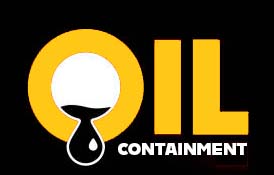In the oil industry, it is crucial to have proper containment barriers in place to prevent any potential leaks or spills from causing harm to the environment. Secondary containment researchers play a vital role in ensuring that these barriers are effective and reliable. One common material used for these barriers is polyurea, a versatile and durable substance that can provide excellent protection against leaks. In this article, we will discuss how to properly create containment barriers in the oil industry, with a focus on the use of polyurea.
Introduction to Containment Barriers
Containment barriers are structures or systems designed to contain spills or leaks of hazardous materials, such as oil. These barriers are essential for protecting the environment and preventing contamination of soil and water sources. In the oil industry, containment barriers are typically used around storage tanks, pipelines, and other facilities where oil is stored or transported.
The Role of Polyurea in Containment Barriers
Polyurea is a popular choice for creating containment barriers in the oil industry due to its excellent strength, flexibility, and chemical resistance. This material can be sprayed onto surfaces to form a seamless, impermeable membrane that effectively contains any leaks or spills. Polyurea is also known for its fast curing time, making it an efficient option for creating containment barriers that need to be installed quickly.
Best Practices for Creating Containment Barriers
When creating containment barriers using polyurea, there are several best practices to keep in mind to ensure that the barriers are effective and reliable:
-
Surface Preparation: Before applying polyurea, it is essential to properly prepare the surface to ensure adhesion. This involves cleaning the surface, removing any contaminants or loose materials, and repairing any cracks or damage.
-
Application Technique: Polyurea is typically sprayed onto surfaces using specialized equipment. It is important to follow the manufacturer’s instructions for proper mixing and application to ensure a consistent and uniform coating.
-
Thickness: The thickness of the polyurea coating is crucial for effective containment. Thicker coatings provide better protection against leaks and spills, so it is important to apply the material at the recommended thickness for the specific application.
-
Quality Control: Regular inspection and maintenance of containment barriers are essential to ensure they remain intact and effective. Monitoring for any signs of damage, wear, or degradation can help prevent potential leaks or spills.
Conclusion
In conclusion, creating effective containment barriers in the oil industry is crucial for protecting the environment and preventing contamination. Polyurea is a versatile and durable material that is commonly used for these barriers, providing excellent protection against leaks and spills. By following best practices for surface preparation, application technique, thickness, and quality control, researchers can ensure that containment barriers are reliable and effective in preventing environmental damage.
